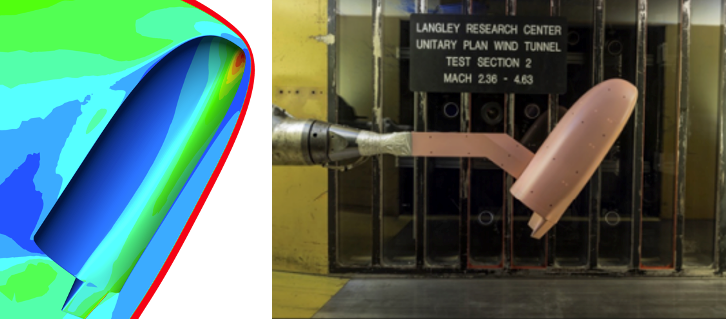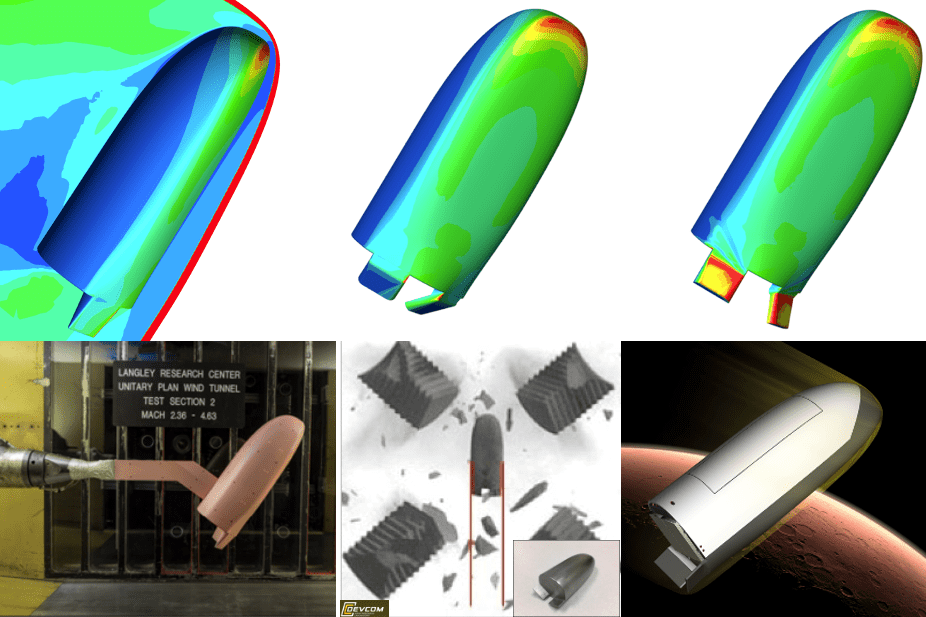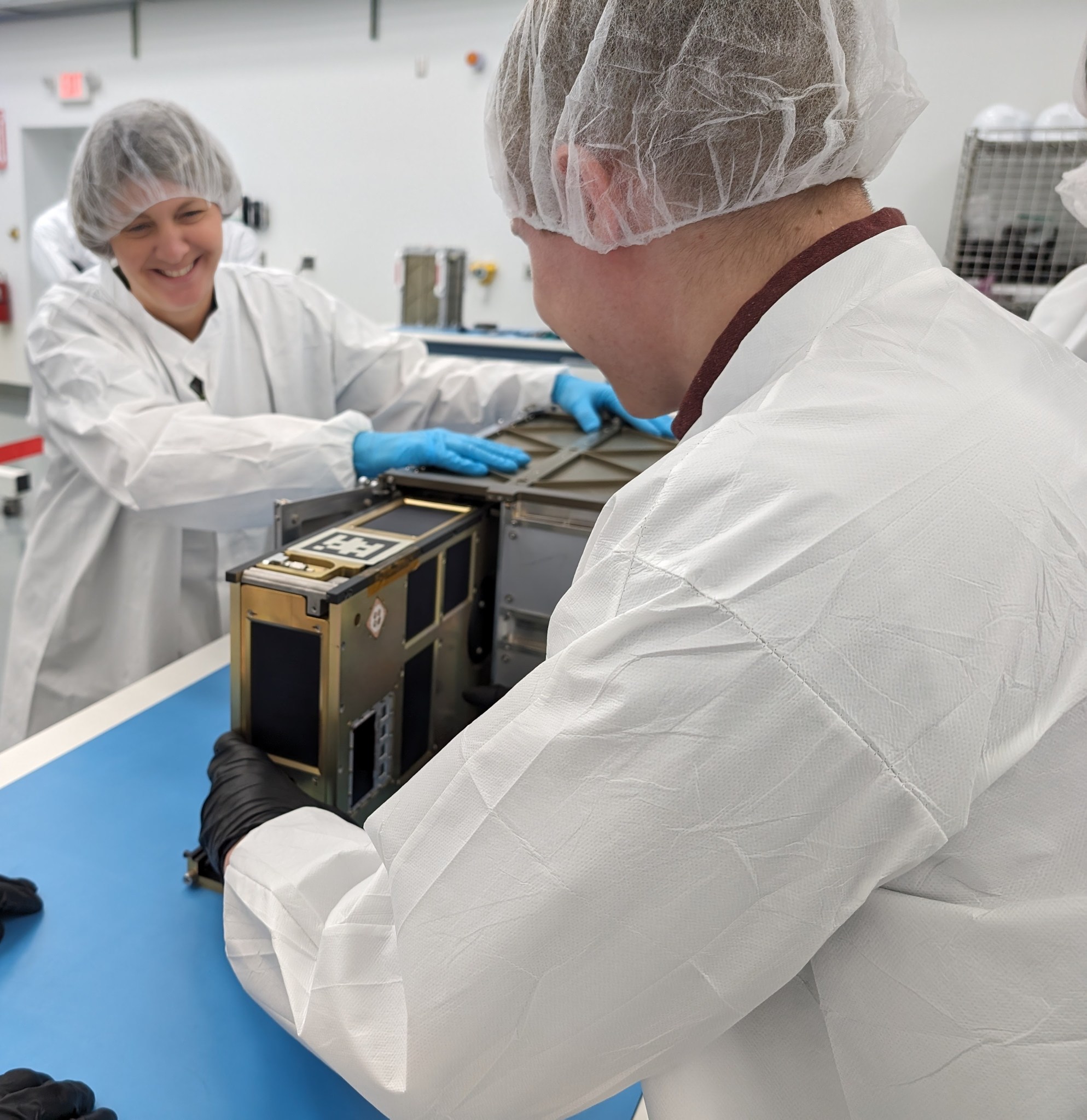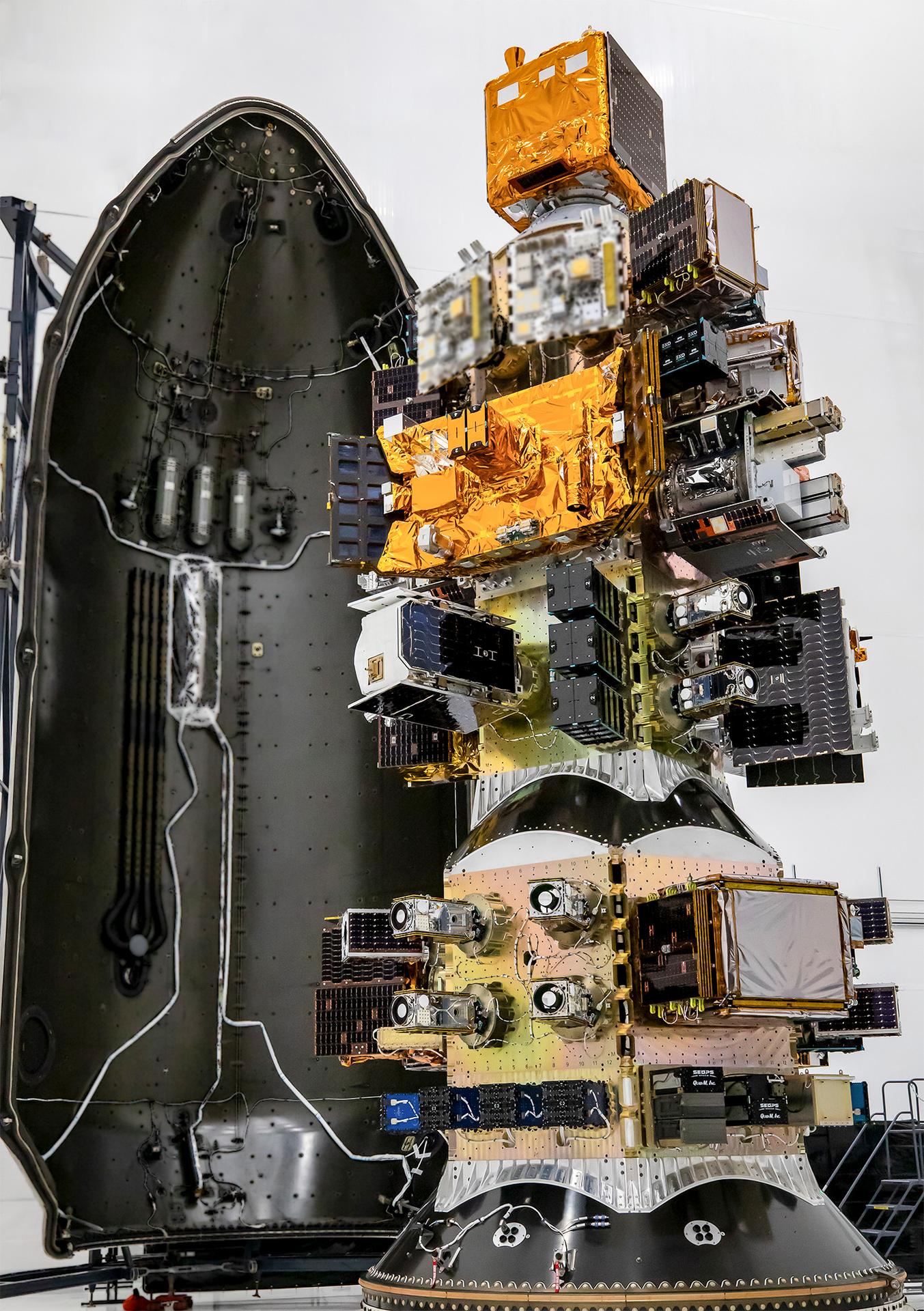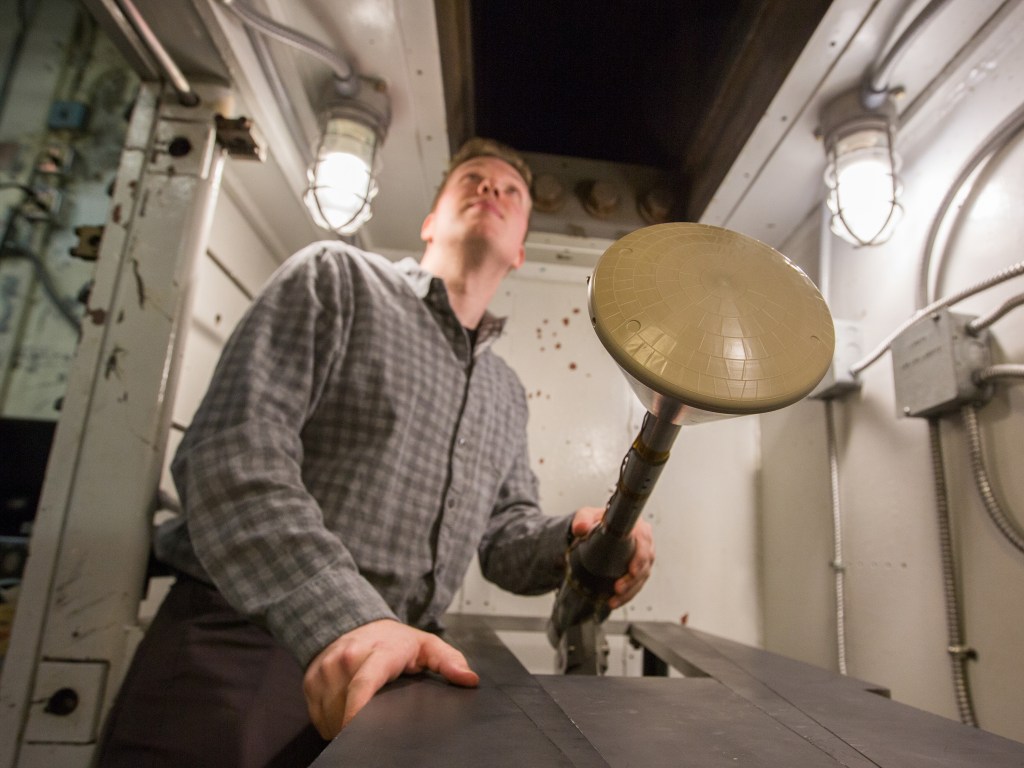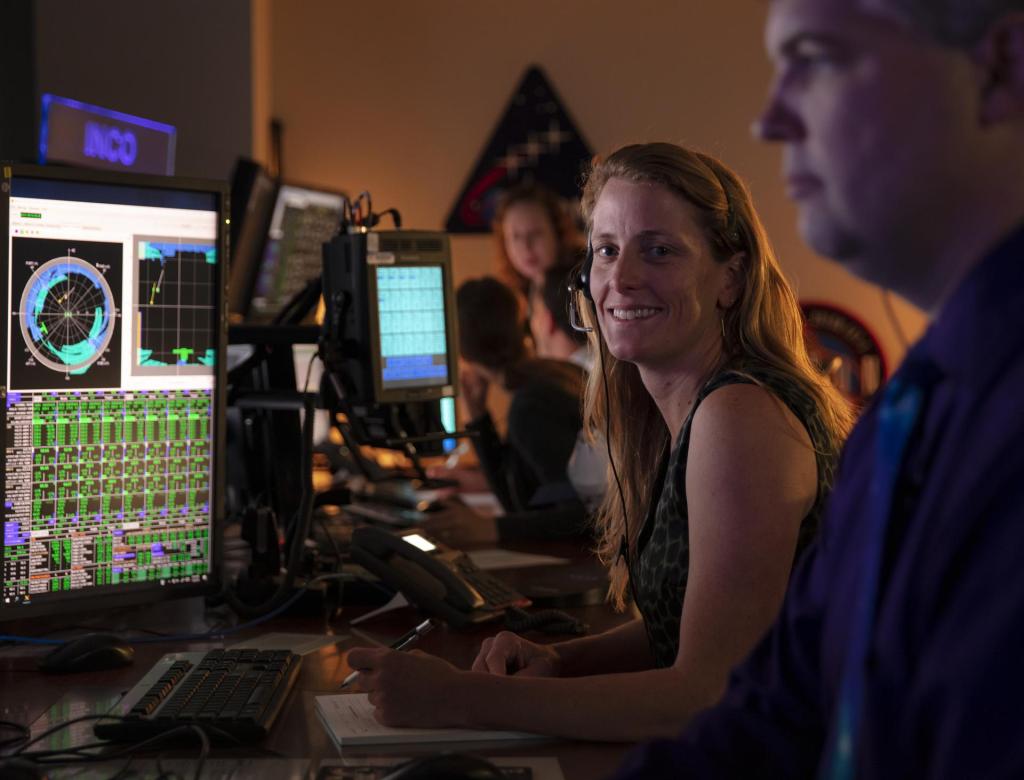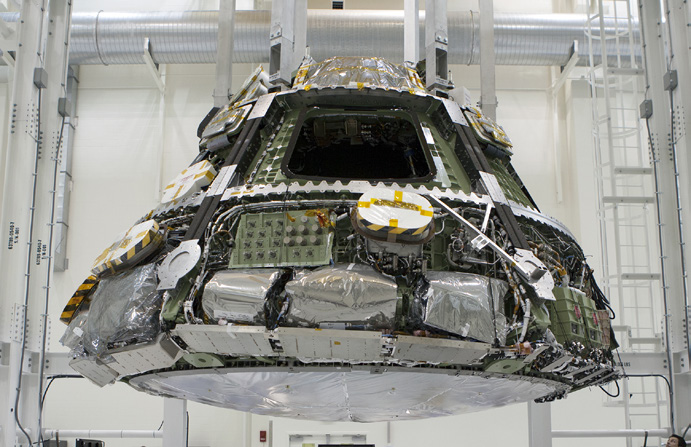Rapid Flight Demonstration
Rapid flight demonstrations play a crucial role in advancing aerospace technologies by enabling fast, cost-effective testing of new systems. These demonstrations focus on quickly validating designs, concepts, and innovations in the flight environment, reducing development time and fostering technological breakthroughs. We invite our partners to leverage NASA Johnson Space Center’s (JSC’s) rapid flight demonstration platforms to mature their technologies and advance them for mission readiness.
A Platform for Testing General Hypersonic and Entry, Descent, and Landing Technologies
NASA is lowering the barrier to entry for both general hypersonic and entry, descent, and landing (EDL) technologies with the development of a low-cost, recoverable, scalable, rapidly developed test platform. The Hypersonic Testing for Entry Platform, HyperSTEP, enables the low-cost flight demonstration of technologies by leveraging a publishable government reference lifting body vehicle design. Industry, academia, and other government agencies are able to partner with HyperSTEP for future opportunities.
Hypersonic flight introduces unique challenges to the mission and vehicle design process. Not only must a vehicle withstand the extreme temperatures and aerodynamic loads of atmospheric reentry, but it must also deliver a payload to its targeted destination with precision. Compounding these challenges are the limited opportunities for testing new technologies in these extreme environments due to the higher costs of reaching hypersonic speeds. This stymies progress in the state of the art for general hypersonic and entry, descent, and landing (EDL) technologies. NASA is leveraging prior investments in cost-cutting technologies to create a low-cost, recoverable Hypersonic Testing for Entry Platform (HyperSTEP) to lower the barrier to entry for new technologies, accelerating the maturation and infusion of new technologies into critical missions [1].
HyperSTEP offers a new government-provided capability for NASA and its partners to better test as you fly and push the boundaries with new technologies performing critical functions whose failures would otherwise impact a mission’s success. The low-cost allows for increased flight-test cadence and the discovery of integrated system level risks that cannot be fully tested or analyzed with ground test facilities and analysis methods in areas such as guidance navigation & control (GN&C) performance, thermal protection systems (TPS), high-temperature structures (i.e., hot structures), decelerators (e.g., parachutes), and vehicle dynamics. The flight environment cannot be fully replicated in a laboratory or a computer model. There is no substitute for flight testing. Frequent flight tests increase the variety of flight data, improving our modeling of the hypersonic regime and strengthening the NASA tools (e.g., for computational fluid dynamics (CFD), thermal analysis, material response) used across industry, academia, and other government agencies. The platform could also be used to replicate select relevant conditions of a full-scale mission at the sub-scale to assist in root cause analysis from an anomalous mission.
The following areas are currently prioritized for technology advancement by HyperSTEP:
- Mid-Lift-to-Drag (L/D) lifting body vehicles
- Advanced Guidance, Navigation & Control (GN&C) algorithms and flight software
- Low-cost avionics for EDL applications (see R5)
- Advanced thermal protection system (TPS) and hot structures
- Aerothermal environment characterization and computational fluid dynamics (CFD) model validation
- Alternative non-hazardous propellants (e.g., nitrous-based solutions for deorbit)
- High angle-of-attack aerodynamics characterization/validation
- Entry-to-descent transition behavior validation
- Plasma physics and communications at hypersonic speeds (i.e., during blackout region)
- Vehicle breakup behavior studies
The HyperSTEP vehicle (CobraMRV) leverages a lifting body shape that was designed as a result of NASA human-class Mars mission architecture studies [2], [3], [4]. Lifting body vehicles offer increased volume efficiency and greater range control capabilities over capsules, making them an attractive class of vehicles to further develop for small to large payload return missions from the Moon, Mars, and beyond. HyperSTEP offers an opportunity to repeatably perform testing of the technologies needed for future human and sample return missions at low costs. Following suborbital flight tests, HyperSTEP will expand capabilities to orbital flight tests for the payloads unable to meet CubeSat volumetric constraints. HyperSTEP aims to do for EDL what CubeSats have done for on-orbit technologies. HyperSTEP prioritizes cheaper to get to better technologies faster.
Rapid Orbital Payload Hosting and Operational Demonstrations
JSC is home to the Realizing Rapid, Reduced-cost high-Risk Research (R5) project. R5 provides a rapid, low-cost, and flexible capability to take low-TRL payloads and get them to orbit. R5 is also capable of demonstrating unique ConOps, like proximity operations. Industry, academia, and other government agencies are able to partner with R5 to get their payloads to orbit.
The Realizing Rapid, Reduced-cost high-Risk Research project, or R5, is a series of CubeSats that are intended to rapidly and affordably get technology prototypes into Low Earth Orbit (LEO). By accelerating the on orbit demonstration of technologies, engineers and scientists will be able to more quickly prove them and make them available to NASA missions and other users. In order to create spacecrafts fast and cheap enough to hit project objectives, R5 is leaning heavily on commercial-off-the-shelf (COTS) hardware and is developing processes to intelligently select and screen these components for the space environment. R5 is also reducing cost and schedule by substantially reducing the traditional process used to build spacecraft. As R5 develops these new methodologies, the findings will be shared with the small spacecraft community so that others can follow the successes and avoid repeating the failures. The baseline R5 spacecraft configuration is a 6U (2x3U) bus and of that approximately 3U is payload volume. The bus form factor and included subsystems can be tailored extensively to best match payload needs. As R5 is intended to support a broad variety of payloads and missions, the bus must have reliable telemetry systems for beaconing, an attitude determination and control system (ADCS), relatively high-performance compute, flexible flight software system, and a very flexible internal configuration. While some subsystems are completely COTS, others are combinations of custom hardware and integrated COTS components. The demonstration of these systems will enable the use of traditionally expensive and long lead time subsystems (like propulsion) on much shorter timescales and for a small fraction of the cost.
Connect With Us
Whether you are a public agency, private company, or academic institution, we look forward to hearing from you. Fill out the Statement of Interest form to submit your inquiry.

























